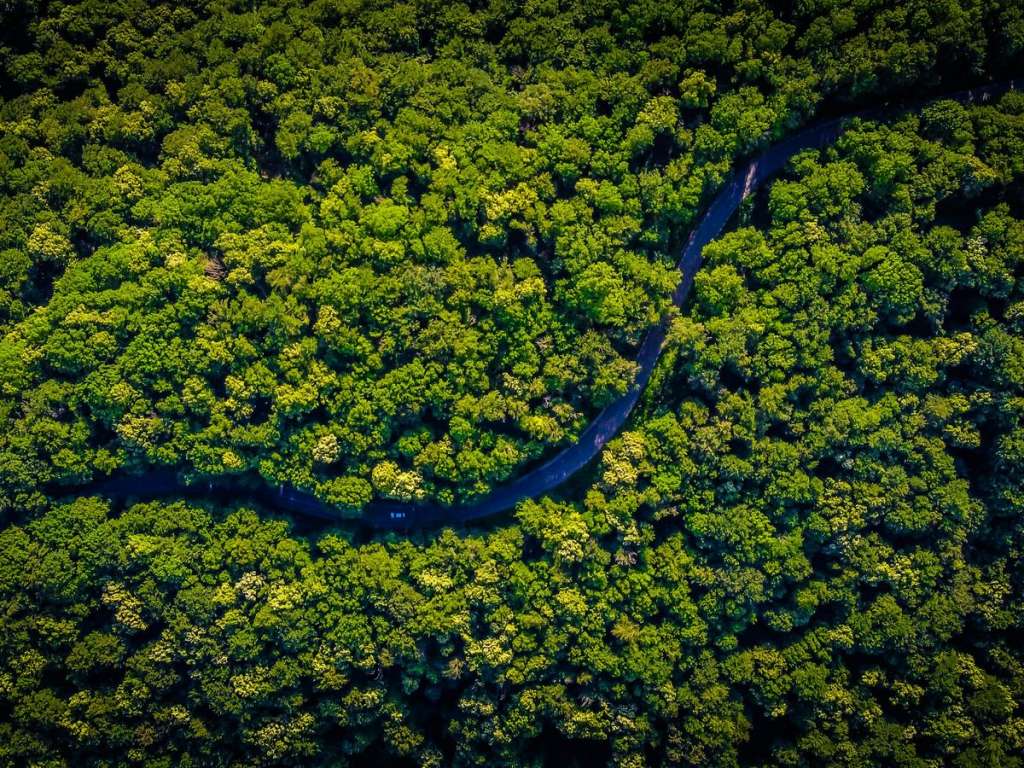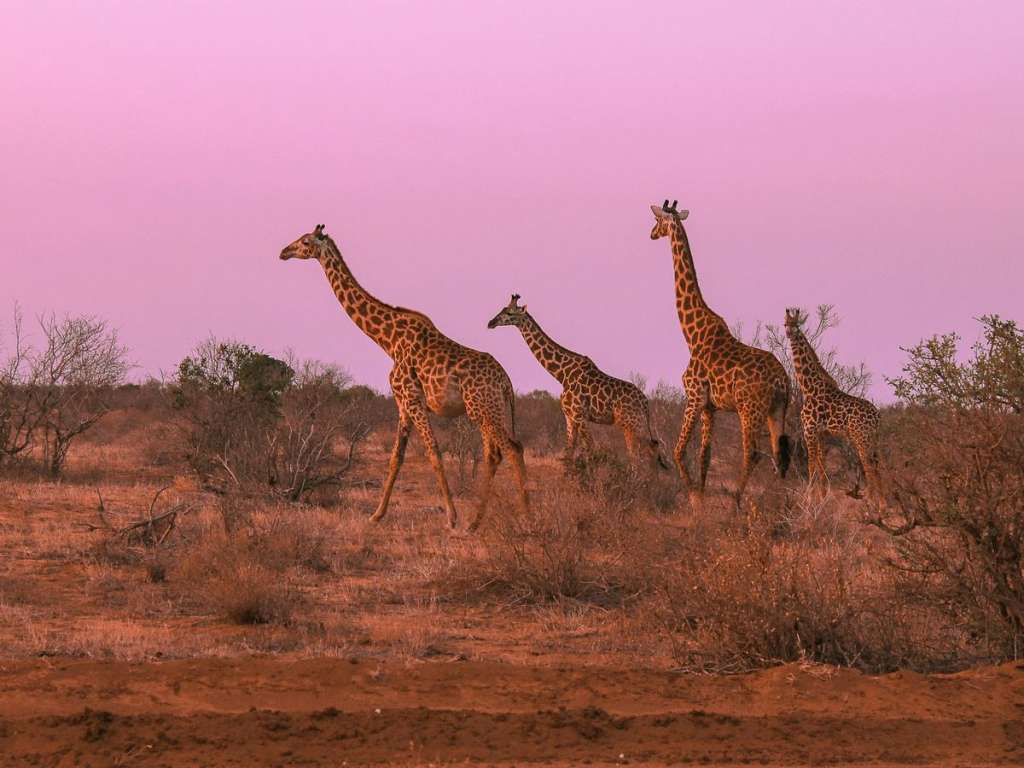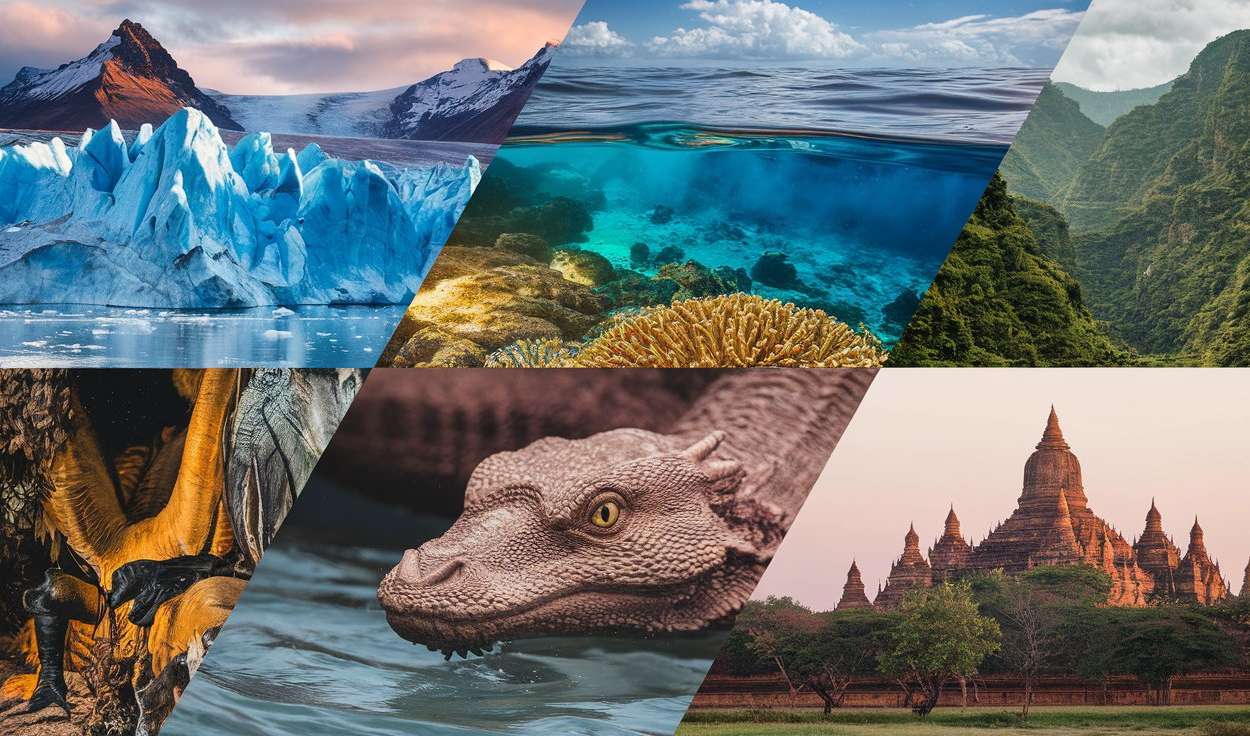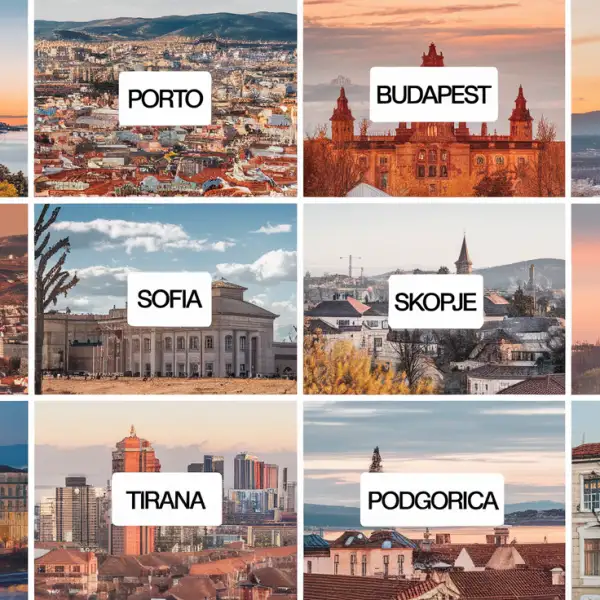Eco-tourism is growing in popularity as more people look for travel options that are kind to the planet. The year 2024 offers many destinations that are leading the way in sustainability. From the icy landscapes of Iceland to the lush rainforests of Costa Rica, there are plenty of places to explore that are both beautiful and environmentally friendly. This article will guide you through the best eco-tourism destinations in 2024, ensuring your adventures are as green as they are exciting.
Discover the top eco-tourism destinations for 2024, from Iceland to Indonesia, and explore sustainable travel options.
- Iceland offers modern, eco-friendly accommodations and a variety of activities like hot springs and ice hiking.
- Bhutan is one of the greenest countries in the world, with 70% of its land covered by forest and a unique focus on Gross National Happiness.
- The Amazon Forest is working towards sustainable tourism by employing native guides to lead eco-friendly tours.
- Indonesia is slowly embracing eco-tourism, with some areas already offering sustainable travel options.
- Costa Rica is a leader in eco-tourism, with a large percentage of its land protected and a commitment to renewable energy.
Iceland
Iceland is a geothermal wonderland of sustainability. The country is famous for its breathtaking landscapes, including waterfalls, glaciers, fjords, volcanoes, lava fields, geysers, and geothermal lagoons. These natural wonders make Iceland a top destination for eco-tourists.
Visitors can enjoy a variety of adventurous activities such as white water rafting, horse riding, caving, quad biking, and glacier climbing, all while maintaining a sustainable and responsible approach.
The tourism industry in Iceland has grown rapidly in recent years. Despite this growth, the industry remains committed to responsible tourism, ensuring that visitors can experience the beauty of the Aurora Borealis, Blue Lagoon, and Gulfoss waterfalls without harming the delicate ecological balance.
Iceland offers a wide selection of lodging options for travelers. The Ion Adventure Hotel, with its prime location and contemporary design, guarantees a memorable stay. Alternative accommodations include hostels like Kex Hotel or campsites such as Skjol, which offer a spacious and comfortable atmosphere at a reasonable price.
Iceland stands out for its use of geothermal energy and its commitment to a low-carbon footprint. This clean energy revolution not only provides sustainable solutions for Iceland’s energy needs but also serves as an inspiration to the world.
Bhutan
Nestled in the majestic Himalayan Mountains, Bhutan is a land of ancient traditions and stunning natural beauty. This Buddhist kingdom is one of the least visited countries in the world, and that’s by design. Bhutan is slowly developing its tourism industry to preserve its natural resources and protect its unique culture.
Bhutan has a law that ensures that 60% of the country must remain forested to preserve it for future generations. Not that Bhutan has to worry, as the country currently absorbs more carbon than it emits!
Bhutan Sustainable Development Fee (SDF)
Traveling to Bhutan in 2024 requires tourists to pay a fee of $100 USD per adult per day. This is known as a Sustainable Development Fee, which was reduced by 50% from $200 to $100 in 2023, and is due to remain reduced until August 2027.
The Sustainable Development Fee is critical in creating long-term, sustainable opportunities for Bhutanese people and is allocated to healthcare, education, environmental preservation, cultural initiatives, and support for local businesses. The country prioritizes maintaining exceptional forest cover and carbon-neutrality. Paying the SDF ensures that tourists are contributing to the country’s development while enjoying a tranquil and intimate experience.
Accommodations in Bhutan
If you’re planning a trip to Bhutan, you’ll find a range of accommodations to suit your preferences. The Amankora Resorts presents unparalleled Himalayan views and top-notch amenities in a luxury setting. If you’re looking for an eco-friendly and affordable option, Gangtey Lodge is a great choice. This lodge seamlessly blends modern comforts with traditional Bhutanese architecture, all while prioritizing sustainable tourism practices.
A journey to Bhutan may come with a price tag, but the value of experiencing its distinctive environment and culture, all while contributing to its conservation, is truly priceless.
Amazon Forest

The Amazon Forest is a vast and vibrant ecosystem that spans across nine countries in South America. It is the world’s largest rainforest, covering an area of 5.5 million square kilometers. This dense biome is best explored both on foot and by water, so as not to miss the massive array of diversity it has to offer.
Adventure Awaits
For adventure seekers, the Amazon offers thrilling activities such as jungle treks, canoeing down the river, and even piranha fishing. These activities provide a taste of the Brazilian Amazon and allow visitors to see abundant wildlife.
Wildlife Wonders
Wildlife enthusiasts can spot exotic species like jaguars, pink river dolphins, and giant otters. The Amazon is home to millions of species of plants and animals, including some that have yet to be discovered.
Cultural Connections
Cultural enthusiasts can learn about the indigenous tribes that call the Amazon home. These tribes offer a glimpse into their way of life and traditions, making for a rich cultural exchange.
Relax and Unwind
For those seeking a more relaxed experience, a leisurely boat ride down the river offers breathtaking views and a chance to see the forest from a different perspective.
Ecotourism in the Amazon is a powerful tool in the battle to protect the rainforest from deforestation, illegal logging, and climate change. This sustainable tourism practice can offer a viable source of income for local communities, thereby reducing their dependence on activities like logging and farming that can be detrimental to the forest’s health.
Eco-Lodges
For a truly immersive experience, consider staying at one of the many eco-lodges in the area. Options like the Napo Wildlife Center in Ecuador and the Uakari Lodge in Brazil offer comfortable accommodations and guided excursions that support local communities.
Key Highlights
- Adventure seekers can embark on jungle treks and canoeing adventures.
- Wildlife lovers can spot exotic species such as jaguars and pink river dolphins.
- Cultural enthusiasts can learn about indigenous tribes and their way of life.
- Relaxation can be found in leisurely boat rides with breathtaking views.
- Eco-lodges offer immersive experiences while supporting local communities.
Indonesia
Indonesia is gradually embracing the concept of ecotourism, recognizing its potential benefits for both local communities and the environment. While the country is still developing its eco-friendly tourism infrastructure, several destinations stand out for their commitment to sustainability.
Bali, Komodo Island, Lombok, Borneo, Sumatra, and Raja Ampat are among the top places to visit. These locations maintain a balanced relationship between tourism and nature, making them ideal for eco-conscious travelers.
How to Travel Greener in Indonesia
- Choose local tour operators who prioritize sustainability.
- Travel with companions knowledgeable about eco-friendly practices.
- Consider volunteering opportunities to give back to the community.
Eco-tourism is on the rise in Indonesia, offering a unique opportunity to explore beautiful landscapes while supporting conservation efforts.
For those seeking sustainable accommodations, here is a list of the most sustainable eco lodges from mainland to islands like Bali, Sumatra, Flores, or Borneo.
Kenya

Kenya is a true gem for eco-tourism in Africa. With its diverse natural landscapes ranging from the famous Masai Mara plains to stunning mountains, pristine beaches, and offshore coral reefs, Kenya offers an unparalleled experience for eco-travelers. The country boasts 54 national parks, which attract over a million tourists every year, making it one of the most popular destinations for ecotourism in Africa.
One of the main attractions for tourists is the opportunity to experience grassland safaris and get up close and personal with some of the world’s most impressive animals such as giraffes, lions, and rhinos. However, with this increase in tourism comes the responsibility to protect the natural environment and the wildlife that inhabits it. The Kenyan government has taken an active role in protecting its natural heritage by stopping illegal poaching, banning single-use plastics, and promoting sustainable tourism practices.
To further promote sustainable tourism, the government has established an organization called “Ecotourism Kenya.” This organization is dedicated to promoting responsible tourism that conserves Kenya’s natural environment and improves the livelihoods of local communities. By partnering with local communities, the organization ensures that they are involved in the tourism industry and reap the benefits of a thriving tourism sector while also preserving their cultural heritage and natural resources.
In addition to the wildlife and natural landscapes, Kenya’s cultural diversity also makes it a unique ecotourism destination. Visitors can explore and engage with the traditional lifestyle of the Maasai people, learning about their rich history and customs. They can also participate in community-based tourism activities such as beadwork, pottery, and traditional dances.
For travelers on a budget, there are many affordable options, such as camping in public campsites or staying in budget-friendly guesthouses like the Wildebeest Eco Camp or the Karen Camp. Additionally, for those who want a more authentic and immersive experience, there are community-owned lodges like the Maasai Mara Wilderness Conservancy or the Ol Pejeta Conservancy, which feature excellent opportunities to interact with local people, learn about their cultures, and participate in conservation efforts.
Palau
Dive into a world of wonder in Palau, a tropical paradise nestled in the western Pacific Ocean. With its turquoise waters, vibrant coral reefs, and mesmerizing marine life, Palau is a dream come true for snorkelers and scuba enthusiasts. This Micronesian archipelago is also leading the way in marine conservation. In 2009, Palau created the world’s first shark sanctuary, protecting an area larger than France. The country’s commitment to sustainability extends beyond its waters, with initiatives to promote renewable energy and eco-friendly practices.
Palau is a small island in the Pacific that has become a must-visit eco-friendly travel destination for 2024.
Costa Rica
Costa Rica is a small country with a big reputation for ecotourism. Over a quarter of the country is dedicated to national parks, nature reserves, and conservation efforts. This makes it a top destination for eco-travelers. The country has a rich variety of ecosystems, including rainforests, beaches, volcanoes, and cloud forests. This diversity makes it a great place to see wildlife, from monkeys and sloths to toucans and jaguars.
Corcovado National Park is a must-visit. It’s known as “the most biologically intense place on earth.” The park has 13 different ecosystems, including lowland tropical rainforests, highland cloud forests, mangrove swamps, and sandy beaches. You can see a wide range of wildlife here, including four different monkey species, sloths, anteaters, and collared peccaries. Offshore, you might spot whales, dolphins, and other marine mammals. The park is also home to endangered species like the Baird’s Tapir, jaguars, and Harpy Eagles.
Here are some popular ecotourism activities to enjoy in Costa Rica:
- Snorkeling and diving: Costa Rica has some of the best snorkeling and diving spots in the world. You can see a variety of marine life, including coral reefs, fish, and turtles.
- Rainforest tours: Explore the Monteverde Cloud Forest and the Corcovado National Park. Guided tours let you see the wildlife and learn about the rainforest ecosystem.
- Volcano tours: Visit active volcanoes like Arenal Volcano and Poás Volcano. Guided tours let you hike to the top and see the craters.
Costa Rica offers a chance to experience the “pura vida” lifestyle surrounded by nature. With over 25% of the country dedicated to national parks, wildlife reserves, and protected lands, it’s clear why Costa Rica is a leader in ecotourism.
For those who want to do more than just sightseeing, Costa Rica offers plenty of opportunities to get involved in ecotourism through volunteering. You can volunteer with local coffee farmers and learn about sustainable farming practices. Sea turtle conservation programs are also popular, where you can help protect these majestic creatures.
Eco travelers can choose from a variety of lodging options, including eco-lodges, boutique hotels, and sustainable resorts. The Pacuare Lodge offers a unique experience with its remote location accessible only by rafting down the Pacuare River. Lapa Rios Ecolodge provides ocean and rainforest views from its private bungalows. For a luxurious getaway, the Nayara Resort Spa & Gardens offers amenities like hot springs, spas, and private villas surrounded by lush gardens.
Galapagos Islands

The Galapagos Islands, located off the coast of Ecuador, are a once-in-a-lifetime ecotourism destination. Designated as the first UNESCO World Heritage Site, the islands boast an exceptional ecosystem that cannot be found anywhere else in the world.
The Galapagos Islands are home to a variety of unique species, including giant tortoises, marine iguanas, and blue-footed boobies, among others. Due to their isolated location, the animals have evolved into new species over time, making the Galapagos a living laboratory of evolution. Actually, the flora and fauna found here have played an important role in educating the world about our planet and inspiring Charles Darwin to develop his theory of evolution. The protected waters surrounding the islands offer visitors the chance to swim with sharks, sea turtles, and sea lions, among other marine life.
Although tourism once threatened the islands, they are no longer listed as ‘in danger’ thanks to strong management and continued stewardship from the government, NGOs, and the local community, who work to build the most sustainable tourism sector that has ever existed. However, all visitors should be aware of the possible by-products of irresponsible tourism, such as contamination from boat oil, the introduction of non-native species, and overconsumption of the freshwater supply, and take measures to ensure they don’t unwittingly harm the land.
If you’re looking for an all-in-one experience that combines lodging and tours, the Galapagos Safari Camp is a great choice. This eco-lodge offers deluxe tented accommodations in the midst of the island’s natural landscapes and also provides a range of guided tours and activities to explore the Galapagos. Another option is the Santa Cruz II, a luxury expedition vessel that provides a comfortable base for exploring the islands with daily guided excursions and activities, including snorkeling and kayaking.
Ecotourism in the Galapagos Islands offers visitors a unique opportunity to experience the beauty of the islands and learn about the global importance of conservation. Visitors can go hiking, biking, snorkeling, and diving, and they can also visit research stations and learn about the work that is being done to protect the islands’ wildlife.
Top Galapagos Islands eco tours: see reviews and photos of eco tours in Galapagos Islands, Ecuador on TripAdvisor.
Finland

Finland, known as the land of a thousand lakes, offers a unique blend of natural beauty and Nordic charm. It’s one of the happiest countries in the world, with a strong focus on quality of life and environmental sustainability. The country boasts excellent air quality, clean lakes and rivers, and fast-growing forests.
Top Eco-Tourism Activities
- Northern Lights Viewing: Witness the magical Northern Lights in the pristine wilderness.
- Sauna Culture: Experience traditional Finnish saunas, a key part of the local lifestyle.
- National Parks: Explore numerous national parks, each offering unique landscapes and wildlife.
Best Time to Visit
The best month to enjoy Finland’s nature is July, when days are long, the weather is warm, and there’s plenty of sun. However, winter also has its magic, especially for those interested in snow activities and the Northern Lights.
Eco-Friendly Accommodations
Finland offers a range of eco-certified accommodations, from cozy cabins in the woods to modern eco-hotels in the cities. These places prioritize sustainability and offer a comfortable stay close to nature.
In Finland, ecotourism isn’t really a thing because all tourism is ecotourism. Respect for nature and the environment has been part of people’s minds for decades.
Must-Visit Places
- Helsinki Islands: With over 300 islands to choose from, you can enjoy nature without traveling far from the city.
- Lake Saimaa: Take a cruise in Puumala by Lake Saimaa, one of the largest lakes in Finland.
- Ranua Zoo: Visit the Ranua Zoo, which offers a unique look at Arctic wildlife.
Finland’s commitment to sustainability and its stunning natural landscapes make it a top eco-tourism destination for 2024.
Ecuador
Ecuador is a small but incredibly diverse country in South America. From the majestic peaks of the Andes to the enchanting Galapagos Islands, Ecuador is a treasure trove of natural wonders. The country is also leading the way in sustainable tourism practices, with initiatives to protect its biodiversity and support local communities.
Quito
Quito, the high-altitude capital of Ecuador, is a city rich in history and culture. The brand-new 14-mile Metro line in Quito makes it easier for travelers to explore the city, from the exquisitely preserved churches of the UNESCO-listed historic center to modern districts flaunting avant-garde towers. Despite some headlines about cartel-related violence, crime rates in Quito are down, and a dedicated police force patrols areas popular with tourists. Don’t miss the San Francisco Market in Old Town, where you can see traditional curanderas (female healers) offering cleanses using bouquets of herbs.
Yasuni National Park
Yasuni National Park is considered to house more diversity in flora and fauna than anywhere else on the planet. Visiting Kichwa Ecolodge in Yasuni is an extremely rewarding experience, combining ecotourism and community-based tourism. You can also visit indigenous tribes with Napo Wildlife Center, another eco-friendly option in the park.
Mindo
Mindo is a small town located in the cloud forest, known for its rich biodiversity. Casa Divina Lodge is a popular eco-friendly accommodation option here. Visitors can enjoy bird watching, hiking, and exploring the lush green surroundings.
Galapagos Islands
The Galapagos Islands are home to a unique variety of wildlife, including giant tortoises, iguanas, and penguins. Visitors can explore the islands on foot, by boat, or by bicycle. Metropolitan Touring, a company leading the way in sustainability, offers wonderful experiences in the Galapagos with their Smart Voyager certified yachts and hotels.
Ecuador, where dreams come true, offers a wide range of eco-systems and possibilities for visitors to learn about the environment while becoming more aware of their impact on it.










Leave a Comment